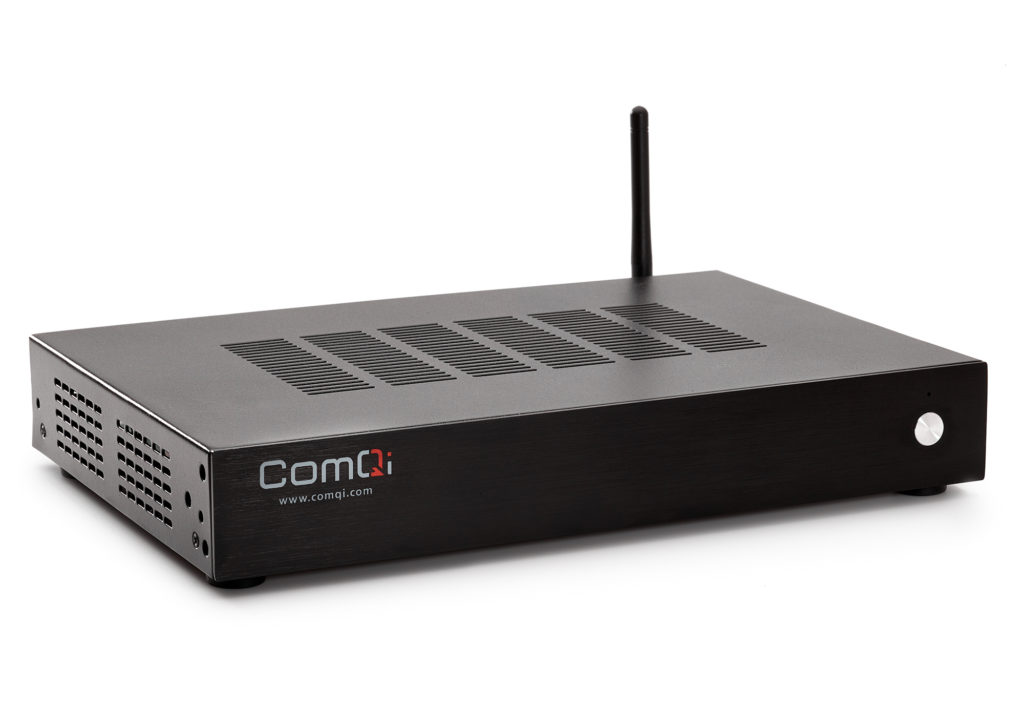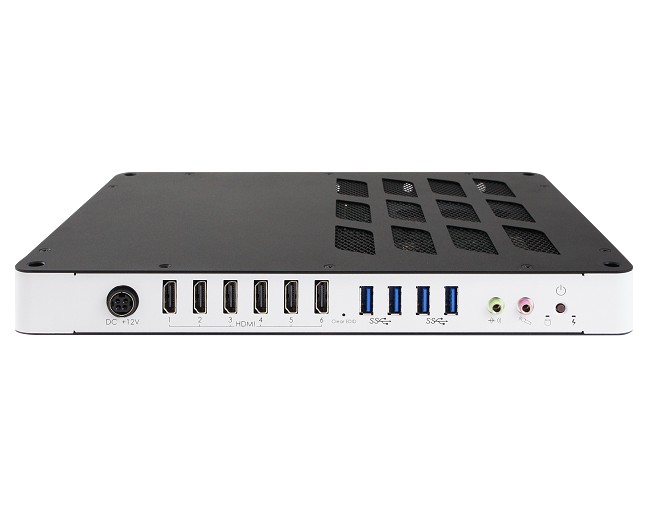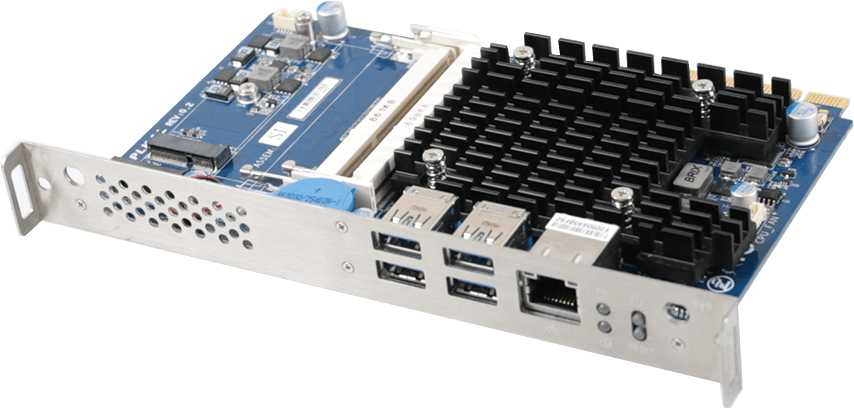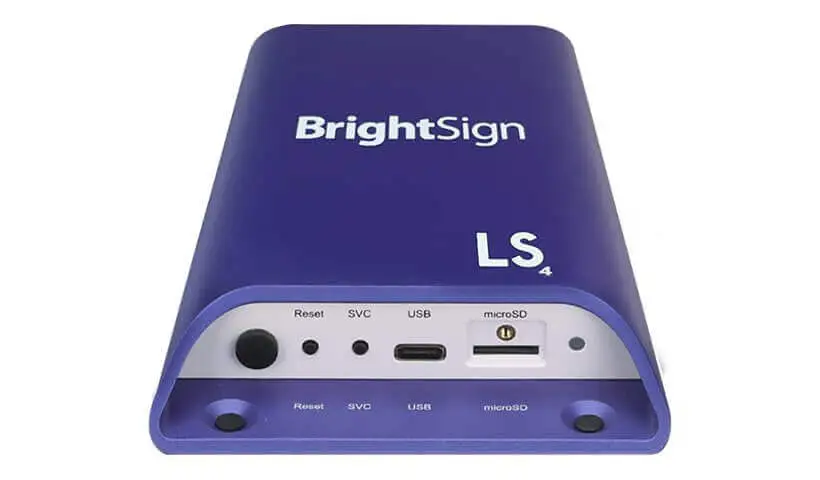Digital Signage Hardware: Expert Guide to Maximize Impact
Digital signage has proven essential for businesses with multiple locations, particularly in the retail and hospitality sectors. With its ability to captivate audiences, increase brand awareness, and enhance customer experiences, digital signage is a worthwhile investment for forward-thinking businesses.

In this comprehensive guide, we’ll dive into digital signage hardware. You’ll learn about the key digital signage considerations, the role of media players, and how to choose the best options for your unique business needs.
Digital Signage Hardware: Purpose & Benefits
Digital signage hardware is the backbone of an engaging visual communication strategy, providing businesses with a powerful medium to interact with their audience. This technology offers unique advantages for multi-location retailers and hospitality chains that can elevate the customer experience and drive traffic and engagement.
In essence, digital signage hardware comprises various components, such as displays, media players, and mounting systems, that facilitate the presentation of dynamic, eye-catching content. By leveraging this technology, businesses can enjoy increased brand visibility, improved customer engagement, and the ability to deliver targeted messages easily.
Going further, the digital signage market is witnessing significant growth:
“Globally, $34.2 billion was spent on digital signage in 2022, and it’s expected to grow to $46.5 billion in 2027…”
This trend underscores the increasing adoption of digital signage across various industries, driven by the need for innovative marketing and communication tools. As a result, companies are embracing digital signage to enhance the customer journey, boost sales, and create a memorable brand experience.
How to Choose Digital Signage Hardware
Selecting the proper digital signage hardware for your business can be challenging. Still, with a systematic approach, you can find the solution that best meets your needs. Here’s a step-by-step method to help you make an informed decision:
1. Identify your business needs and goals
Begin by defining your business objectives for implementing digital signage. Consider factors such as target audience, desired outcomes, and the type of content you plan to display.
2. Determine your budget
Establish a budget for your digital signage investment, considering upfront costs and ongoing expenses, such as maintenance, software subscriptions, and content creation.
3. Research different hardware options
Explore various digital signage options, including display types (LED, LCD, projection), media players, and mounting systems. Evaluate each option based on durability, performance, and ease of use.
4. Request demos and trials
To get a feel for how a particular digital signage solution works, request demos or trials from manufacturers or suppliers. This action will allow you to assess the hardware’s user experience, compatibility, and overall performance.
5. Consider scalability and future-proofing
Choose digital signage hardware that can grow with your business and adapt to future technological advancements. Opt for modularity, upgradability, and compatibility with emerging trends.
6. Seek expert advice
Consult with industry experts or enlist the help of a digital signage consultant to ensure you’re making the best choice for your business. Their expertise can be invaluable in navigating the complexities of the digital signage landscape.
Types of Digital Signage Hardware
You must understand the various hardware options available to maximize your digital signage investment. This section will explore different types of hardware and provide insights to help you make the right choice for your business.
Displays
Displays are the most visible component of your digital signage system and come in various types, including LED, LCD, and projection screens. Each type offers distinct advantages and limitations, so selecting the correct display for your needs is essential.
- Light Emitting Diode (LED) Displays: LEDs are known for their high-quality images, energy efficiency, and durability. They are also suitable for indoor and outdoor applications. However, they can be more expensive than other display technologies, particularly regarding higher resolutions.
- Liquid Crystal Display (LCD) Displays: LCDs offer HD quality images and are more affordable than LED displays, especially at higher resolutions. But they’re best suited for indoor applications, as they may not perform well in direct sunlight or extreme temperatures.
- Projection Screens: Projection screens are versatile and can create large-scale displays. They’re ideal for temporary installations or unique spaces. However, they may not offer the same brightness levels as LEDs or LCDs, and ambient light also affects the quality.
When selecting a display, consider factors such as size, resolution, brightness, viewing angles, and lifespan. Your choice should depend on your content, location, and audience’s viewing distance. For example, a large display with high resolution and brightness may be ideal for a busy public area, while a smaller display with lower resolution and brightness may be more suitable for a small office.
Place your display in high-traffic areas to maximize impact and ensure it’s visible from multiple angles. Consider factors such as glare, ambient light, and accessibility when determining the orientation of your display.
Media Players
Media players are a vital part of any digital signage system, as they are responsible for delivering content to displays. Unlike other options like System-on-Chip (SOC), media players offer a “greater and more advanced set of features.” Therefore, understanding the different types of media players and their pros and cons is crucial when selecting the right one for your needs. These are the main three:
- PC-based players: These use a dedicated computer to store and play content. They’re high-performance and flexible, handling various file formats and applications. However, they can be more expensive and require more maintenance than other players.
- Embedded players: These are built into the display, eliminating the need for a separate device. They’re compact and energy-efficient but may have limited performance and compatibility compared to PC-based players.
- Streaming players: These players rely on an internet connection to stream content from a remote server. They’re easy to install and manage but require a stable internet connection for smooth content playback.
When selecting a media player for your digital signage hardware, you must consider several factors to ensure optimal performance:
- Evaluate the media player’s processing power and graphics capabilities, as this will impact the quality and smoothness of content playback.
- Assess whether the media player can support your current needs and growth plans to ensure scalability.
- Check the specifications of the media player and ensure that it can handle the types of content you want to display to ensure compatibility.
To maximize your media player investment, follow these best practices:
- Choose a media player that supports your content management system (CMS) to streamline content management and scheduling.
- Opt for a media player with remote management capabilities to simplify updates, monitoring, and troubleshooting.
- Ensure your media player has enough storage capacity for your content library. Consider using cloud-based storage for easy access and scalability.
Mounting Hardware
Mounting hardware is critical to any digital signage system, allowing displays to be securely attached to the wall or ceiling. Several types of mounting hardware are available, each with advantages and disadvantages:
- Wall Mounts: Wall mounts typically hang displays flat against a wall. They come in several sizes and styles, so you should be able to find one for your needs. Wall mounts are also easy to install and provide good ergonomics, allowing displays to be positioned at an optimum viewing angle. However, they are less flexible than other mounting options and can damage walls if not installed correctly.
- Ceiling Mounts: Ceiling mounts are designed to suspend displays from the ceiling, allowing them to be positioned at any height. This trait enables the display to be placed in a more visible location, making it easier for potential customers to view it. However, they are more expensive than wall mounts and require a stronger ceiling structure to support the weight of the display.
- Floor Stands. Floor stands are mobile displays you can move from one location to another. They are easy to install and adjust for optimal viewing angles. And they are also more flexible than wall and ceiling mounts, as they can be placed almost anywhere. However, they occupy more traffic space as they aren’t mounted on a wall.
When selecting mounting hardware, there are several factors to consider. First, you should ensure that the hardware is suitable for the size and weight of your display. Wall and ceiling mounts can handle smaller displays. In comparison, larger displays may require a floor stand or other custom mounting solution. You should also consider the location of your display, as this will determine the type of mount you need. Wall mounts are best suited to fixed locations, while you can use ceiling and floor mounts flexibly.
If installing a wall or ceiling mount, use the correct fixtures and fittings to secure the display safely. Consider the cable management options available, as this will help keep your display and cables tidy. When installing a floor stand, ensure it is on a stable surface and securely fastened to the floor. If necessary, add weights or bolts to secure the stand in place further. Finally, always position your displays at a comfortable viewing angle for users.
Here are some extra tips on ensuring your displays are positioned correctly for optimum effect:
- Position the display at an optimal viewing angle: Ensure it is set at an angle that makes it easy for viewers to read and take in the information.
- Place the display in a visible location: Position it in a place where it can be easily seen and noticed.
- Use contrasting colors: Choose contrasting colors for the display and its surroundings to make it stand out.
- Incorporate lighting: Use lighting to draw attention to your displays and make them visible.
- Utilize multiple displays: Consider using multiple displays in different locations to create a more significant impact.
Best Digital Signage Players
Digital signage media players are the devices responsible for delivering content to your displays. Depending on your needs, there are different types of players available. Here are some options that multi-location businesses should consider:
500 Series

The 500 Series player is an entry-level digital media player designed for 1080p video playback and simple multi-zone layouts. It is cost-effective and suitable for basic digital signage needs. This player has a small form factor and low power consumption, making it an ideal option for businesses on a budget.
900 Series

The 900 Series player is a mid-range and high-end player that can handle 4K content and complex HTML5 applications. It is perfect for ultra-smooth interactive touchscreen content and can perform excellently, even for demanding applications such as video walls. Although more expensive than the 500 Series, it offers more features and better performance.
1000 Series

The 1000 Series player is a video wall player that can handle 6- or 12-video outputs and play 4K and HTML5-based content. It is suitable for large-scale digital signage installations such as video walls and can handle up to 6 video outputs with excellent performance.
OPS/SDM Players

OPS and SDM players offer flexibility and easy installation, and they are suitable for small to medium-sized digital signage installations. These players can be used in SDM- and OPS-supported screens, making them a great option for businesses that require quick and easy installation.
BrightSign

The BrightSign player is an industry-standard player that can be used with ComQi WebPlayer software to leverage the enterprise-grade functionality of the EnGage CMS. This player offers high reliability and ease of use, making it suitable for mainstream 4Kp60, Full HD, and HTML5 applications. Using the WebPlayer software, businesses can easily manage their digital signage system alongside the standard EnGage media player.
Choose the Right Digital Signage Hardware for Your Business
When it comes to digital signage hardware, making the right choice is critical for businesses to enhance customer experiences, brand awareness, and audience engagement. You can select the best media players and mounting hardware to meet your business goals by considering performance, scalability, and cost factors.
For businesses seeking comprehensive digital signage solutions, ComQi offers tailored designs that align with your brand’s aesthetic and a user-friendly content management system, EnGage, for complete real-time control over your digital messaging. Connect with us to see how our digital signage solutions can transform your business today!
